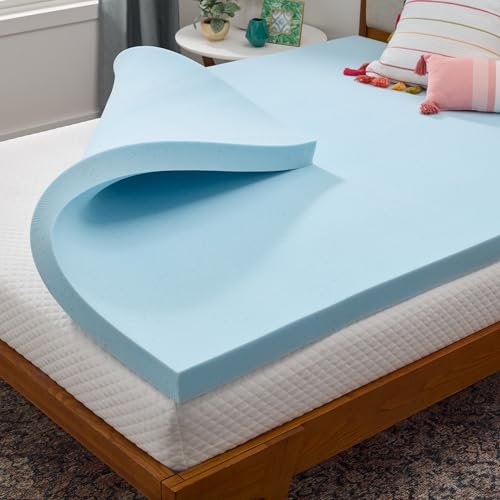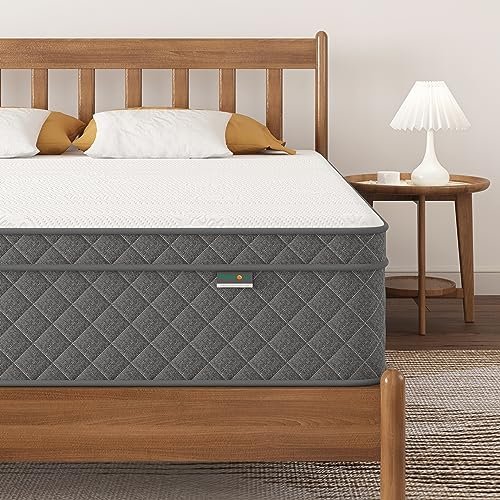
Silent Nights Ahead: How to Stop Your Bed Frame From Squeaking for Good!
There’s nothing quite as disruptive to a peaceful night’s sleep as a relentless, rhythmic squeak every time you shift in bed. That nagging noise can turn your sanctuary into a source of frustration, leading to restless nights and groggy mornings. If your bed frame has started to sound like a grumpy old ship, you’re not alone – and good news: most squeaks are fixable with a little detective work and some simple DIY solutions!
You don’t need to buy a brand-new bed to reclaim your quiet slumber. This detailed guide will walk you through identifying the source of the noise and applying effective, straightforward fixes. Get ready to silence that squeak and enjoy the peaceful sleep you deserve!
Why Do Bed Frames Squeak? Understanding the Culprit
Before we dive into solutions, let’s understand why your bed frame might be protesting. Squeaks are almost always caused by friction between two components that should be stable but are instead rubbing against each other. Common culprits include:
- Loose Joints: Bolts, screws, or other fasteners that have come undone slightly, allowing parts to shift.
- Metal-on-Metal or Wood-on-Wood Rubbing: Even perfectly assembled frames can develop friction points over time as materials settle or expand/contract.
- Slats Rubbing: Wooden or metal slats moving against the side rails or support beams.
- Frame Legs/Feet: Uneven legs, or the legs themselves rubbing against the floor or their mounting points.
- Headboard/Footboard: These can sometimes rub against the frame or even the wall.
- Worn Components: Over time, parts can simply wear down, leading to increased play and noise.
The First Step: Become a Squeak Detective!
You can’t fix a problem until you know where it’s coming from. Pinpointing the exact source of the squeak is crucial. Don’t assume it’s one thing; investigate systematically.
-
Remove Your Mattress and Box Spring: This is the most important step! Squeaks can sometimes originate from the mattress or box spring itself, or they can muffle the sound from the frame.
- Carefully lift and set your mattress aside.
- If you have a box spring, remove that too.
- Now, you’re left with just the bare bed frame.
-
Methodically Test the Frame:
- Press down on different sections: Starting with the headboard, press down firmly. Move to the side rails, then the footboard, and finally the center supports.
- Listen carefully: Try to replicate the squeak. Does it happen when you press on a specific corner? A particular rail? A joint?
- Wiggle components: Gently push and pull on the joints, slats, and legs. Does any movement cause a squeak?
- Involve a helper (optional but recommended): Have someone else press on the frame while you listen intently from different angles. Sometimes, an extra set of ears can make all the difference.
Once you’ve identified the general area of the squeak, you’re ready to tackle it head-on!
Step-by-Step Solutions to Silence Your Squeaky Bed Frame
Let’s fix that noise based on the most common culprits:
1. Loose Joints & Fasteners
This is the most common reason for a squeaky bed frame. Over time, the bolts, screws, or other fasteners holding your frame together can loosen.
- Gather Your Tools: You’ll likely need an Allen wrench (hex key), a screwdriver, or a wrench, depending on your frame’s hardware.
- Inspect Every Joint: Go around your entire bed frame. Look at every bolt, screw, and connection point.
- Tighten Everything: Systematically tighten every single fastener. Don’t just tighten the ones in the area you suspect. A loose bolt on one side can cause stress and squeaking on the other.
- Important: Tighten firmly, but do not overtighten, especially with wooden frames, as you could strip the screws or crack the wood. Just snug is good.
- Consider Washers: If tightening doesn’t completely resolve the issue, or if bolts seem to loosen quickly again, add washers to the bolts. Flat washers can help distribute the pressure, prevent loosening, and create a tighter fit. Lock washers can provide extra grip.
2. Rubbing Slats or Support Beams
If your bed has wooden or metal slats that sit across the frame, these are notorious for squeaking as they rub against the side rails or center support.
- Cushion the Contact Points:
- Felt pads: Small, self-adhesive felt furniture pads are excellent for this. Stick them to the ends of the slats where they meet the frame.
- Fabric strips: Cut old socks, pieces of an old t-shirt, or other thin fabric into strips. Wrap them around the ends of the slats or lay them along the inside of the frame where the slats rest.
- Paraffin wax: For wooden slats and frames, rubbing a block of paraffin wax (like canning wax) along the contact points can create a smooth, silent barrier.
- Secure Loose Slats: If your slats are just resting loosely, they might be moving too much.
- Non-slip matting: A thin piece of non-slip rug pad material placed between the slats and the frame can prevent movement.
- Small screws: If appropriate for your frame, you can carefully use small screws to secure the ends of the slats to the frame. Be very careful not to drill through the side of your frame! Pre-drill pilot holes if necessary.
3. Friction Between Metal or Wood Components
Sometimes, it’s just raw material rubbing against itself, especially with older frames.
- For Wood-on-Wood Friction:
- Wax: As mentioned above, paraffin wax or beeswax rubbed directly onto the rubbing surfaces is incredibly effective. It creates a smooth, non-friction barrier.
- Talcum Powder: A light dusting of talcum powder can also reduce friction.
- For Metal-on-Metal Friction:
- Silicone Spray: A thin spray of a furniture-safe silicone lubricant on the contact points can work wonders. Wipe away any excess immediately to prevent greasy residue.
- Dry Lubricant: Some dry film lubricants (often graphite or PTFE based) can be excellent for metal without attracting dust or dirt.
- Fabric or Felt Barriers: Just like with slats, thin pieces of felt or fabric placed between the rubbing metal parts can eliminate the noise.
4. Squeaky Legs or Feet
If the squeak seems to come from the bottom of your bed, the legs or feet might be the problem.
- Check for Wobble: Push on each leg. Does it wobble or shift?
- Tighten Leg Fasteners: If the legs are bolted or screwed on, tighten those fasteners.
- Level the Frame: An uneven floor can cause stress on one leg. Use furniture pads or shims under shorter legs to ensure the frame is perfectly level and all legs bear weight evenly.
- Floor Contact Squeak: If the legs are squeaking against the floor, place furniture pads or coasters made of felt or rubber under each leg. This also protects your floor!
5. Headboard or Footboard Noise
Sometimes, it’s not the main frame, but the attached headboard or footboard.
- Tighten Mounts: Ensure all bolts connecting the headboard and footboard to the main frame are snug.
- Padding Against the Wall: If your headboard is pushed against a wall, it might be knocking or rubbing. Place felt pads or a piece of fabric between the headboard and the wall to dampen any contact noise.
General Tips for a Quieter Bed
- Regular Maintenance: Don’t wait for a persistent squeak. Periodically check and tighten your bed frame’s fasteners every 6-12 months. This preventative measure can save you a lot of hassle.
- Assemble with Care: When assembling a new frame, always follow the instructions precisely. Don’t rush, and ensure all parts are correctly aligned and tightened from the start.
- Consider Your Mattress and Box Spring: While the focus here is the frame, sometimes an old, worn-out mattress or box spring can mimic frame squeaks. If your frame is perfectly silent after all these steps, but you still hear noise, your sleeping surface might be the culprit.
- Even Weight Distribution: Try to distribute weight evenly on your bed. While not a direct fix for a squeak, it can reduce stress on certain parts of the frame.
Common Mistakes to Avoid
- Ignoring the Problem: A small squeak can quickly become a loud, annoying one. Address it sooner rather than later.
- Not Pinpointing the Source: Guessing where the squeak is coming from will lead to wasted effort and frustration. Always start with the detective work!
- Over-Tightening: While tightening is key, excessive force can strip screws, damage wood, or warp metal components. Tighten until snug, then stop.
- Using the Wrong Lubricant: For wooden frames, oil-based lubricants can stain or damage the wood. For metal, heavy grease can attract dust and dirt. Stick to appropriate, non-staining friction reducers like wax, talcum powder, or silicone spray.
- Giving Up Too Soon: Sometimes, it takes a few attempts to find the exact source and the perfect fix. Be patient and methodical.
Reclaim Your Sleep!
A squeaky bed frame is an annoyance, but it doesn’t have to be a permanent fixture in your bedroom. With a little patience, some basic tools, and these detailed steps, you can transform your noisy bed into a haven of quiet comfort.
So, grab your tools, get ready to play detective, and prepare for peaceful, squeak-free nights of sleep! You’ve got this.
Frequently Asked Questions(FAQ)
Q. What is the most common reason a bed frame squeaks?
A. The most common reason a bed frame squeaks is loose connections. Over time, the bolts, screws, or joints that hold the frame together can loosen due to movement and weight, allowing parts to rub against each another and create friction, which results in that annoying squeaking sound.
Q. How do I identify the exact source of the squeak?
A. To identify the exact source, first remove your mattress and box spring (if you have one) from the frame. Then, carefully press down on different parts of the bare bed frame. Listen closely to pinpoint which specific joint, leg, or slat connection is making the noise. You can also gently shake each section. This isolation helps confirm if the frame is truly the culprit, rather than the mattress or box spring.
Q. My metal bed frame is squeaking. What’s the best way to fix it?
A. For metal bed frames, the primary fix is to tighten all bolts, nuts, and screws with the appropriate wrench or screwdriver. If the squeaking persists, apply a lubricant like WD-40, silicone spray, or even a small amount of petroleum jelly to the joints, connection points, and any areas where metal rubs against metal. You can also insert thin rubber or nylon washers around bolts before tightening them to reduce friction and absorb vibration.
Q. My wooden bed frame is squeaking. How can I stop it?
A. Wooden bed frames often squeak due to wood rubbing against wood or loose joints. First, tighten all screws and bolts securely. If the squeak continues, insert felt pads, small pieces of cloth, or even old socks between any wooden components that are rubbing together, such as slats resting on the side rails or joints where two pieces of wood meet. Applying paraffin wax or beeswax to these friction points can also create a smooth barrier to reduce noise.
Q. Can the bed slats be the cause of the squeaking, and what’s the solution?
A. Yes, bed slats are a very common source of squeaks. They can rub against the frame’s side rails or against each other. To fix this, place felt pads, thin pieces of foam, or even old T-shirt fabric under the ends of each slat where they rest on the frame. If the slats are loose, you can secure them with small screws (if your frame allows) or use non-slip matting to hold them firmly in place.
Q. What if the squeak is coming from the headboard or footboard?
A. If the headboard or footboard is the source, ensure it is securely attached to the bed frame. Tighten any bolts connecting it. If it’s still noisy, it might be rubbing against the wall or the frame itself. Place felt pads, rubber bumpers, or small pieces of cloth between the headboard/footboard and any contact points (wall, frame, or mattress) to prevent friction and absorb movement.
Q. My bed frame still squeaks after tightening everything and adding padding. What else can I try?
A. If basic fixes don’t work, consider these advanced steps:
1. Check for Uneven Legs/Floor: Place thin shims (cardboard, wood, or rubber) under any bed legs that don’t sit firmly on the floor.
2. Add Washers: For persistent squeaks at bolt points, try adding nylon or rubber washers on both sides of the joint before tightening the bolt.
3. Lubricate Wood with Wax: For wooden frames, rub a stick of paraffin wax or a bar of soap directly onto any contact points or joints where wood rubs against wood.
4. Reassemble: In stubborn cases, a complete disassembly and careful reassembly of the frame, applying all the above tips, can often resolve the issue.
Q. Can a squeaky mattress or box spring be mistaken for a bed frame squeak?
A. Absolutely. It’s very common to mistake noises from an old or worn-out mattress or box spring for a bed frame squeak. To check, first remove the mattress and box spring and test the frame alone. If the frame is silent, then place only the box spring back on and test it by pressing down on different areas. If it squeaks, the box spring is the issue. If not, add the mattress and test it to see if it’s the source.
Q. Is there a long-term solution to prevent bed frame squeaking?
A. While no solution is permanent, regular maintenance is the best long-term prevention. Make it a habit to periodically (e.g., every 3-6 months) tighten all bolts and screws on your bed frame. If you have a wooden frame, reapply wax to joints annually. For metal frames, a quick spray of silicone lubricant on key joints once a year can also help. Using high-quality felt pads or rubber washers at friction points from the start can also significantly reduce future noise.
Related Articles
7 Top Full Size Bed Frames: What is the Dimensions of a Full Size Bed Frame and More!
Getting a good night’s sleep often starts with the right bed, and for many, a full-size bed is the perfect sweet spot between a twin and a queen…
How Much Is a King Size Sleep Number Smart Bed
How Much Is a King Size Sleep Number Smart Bed? Your Guide to Understanding the Investment Recommended Product: Select Comfort Air Bed Chamber for Sle…
How Much Does a Sleep Number 360 Smart Bed Cost
How Much Does a Sleep Number 360 Smart Bed Cost? Recommended Product: Sven & Son Classic Adjustable Bed Base — head and foot lift, massage, under-…



